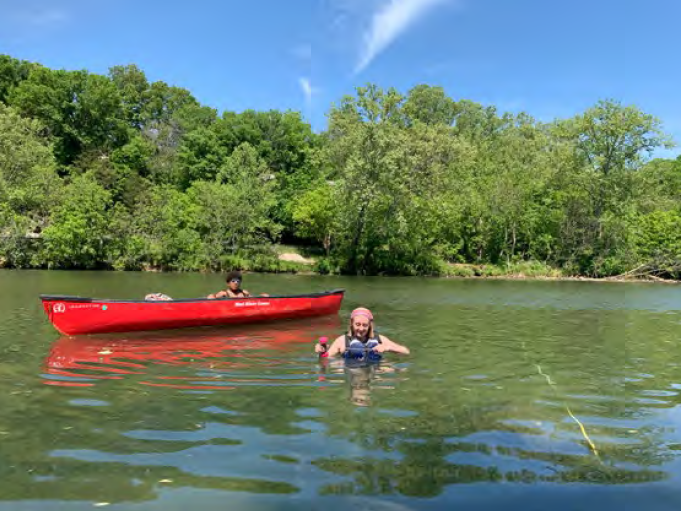I took 231 Environmental Field Methods with Margaret Anne in the spring term of 2021 as a sophomore. Throughout the course my twelve classmates and I learned about field work, environmentalism, water resources, pollution, stream health, and so much more. We stayed in Lexington for the full four weeks and went outside every day, sometimes staying on campus to do work in Woods Creek, and other times traveling to locations near town or in the surrounding Blue Ridge. Over the four weeks Margaret Anne taught us many types of field work, including how to take soil cores, measure tree throws, assess stream health, analyze water samples, and test for dissolved ions both in the lab and in the field. One of my favorite things we did was study the ben-thic macroinvertebrates of Woods Creek. It was fascinating to learn about how these little “bugs” can tell us so much about stream conditions, and then getting to collect and study them for our stream health analyses was so much fun. During the second two weeks, our class created a project to work on together. We used the methods and techniques that we’d been taught to analyze the impact of fertilizers on Woods Creek. It was great to get to research it together, and Margaret Anne was there every step of the way to help us find ways to answer our questions and reinforce our new skills. I really loved this course because I got outside, learned a lot about the environment and geolo-gy in and around Lexington, and made great connections with my peers. It was a lot of work, 30 hours of class a week is no joke, but the knowledge and experience I got out of it was definitely worth it. Now I feel confident when I do field work in my other classes, and I can apply the things I learned about environmentalism to other topics in geology. Overall, it was an awesome experience and I’m so glad I took the class.
Hinkle’s GEOL 231: Environmental Field Methods students conducting their final student-proposed and selected project assessing the health of Woods Creek via stream water geochemistry and benthic macroinvertebrate analyses
Jessie Ogden’s bunny, Daisy, was an honorary member of our class, visiting on occasion!
Jessie Ogden (C’23) collects depth measurements along a transect of the Maury River while teammate AJ Mabaka (C’22) supports from the canoe.


